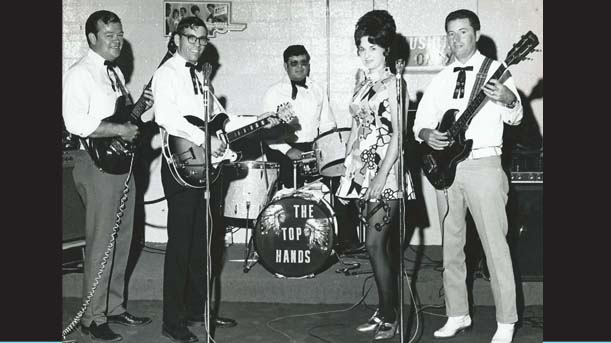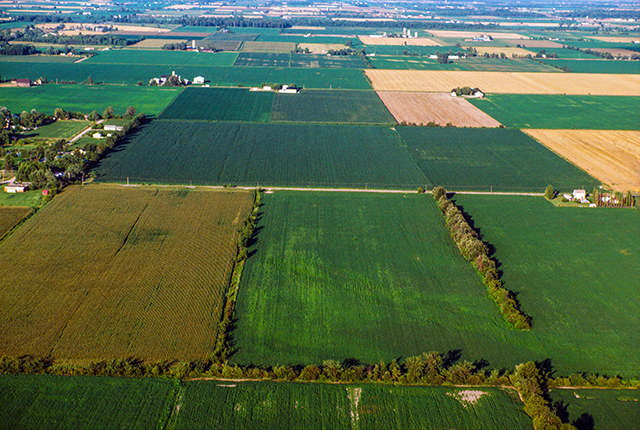Country Lifestyles
A Musical Journey: Lynn Saunders story from the cotton field to the bright lights

By contributing writer Judy Wade
From a four-year-old singing in the cotton patch with sisters Peggy and Wilma to opening for many top country and western singers to singing in the Henrietta Cowboy Church band, Lynn Howard White Saunders’ musical journey has been an exciting one.
One of six children born to Elzie and Alma Howard on the banks of the Wichita River in Wichita Falls, she was her father’s “boy helper” in the hay fields while her mother went to work in a factory making bombs during World War II.
Her first public appearance was at age five or six when she and her sisters sang “Oh, How I Love Jesus” at the City View Baptist Church. One Christmas, her father, who also raised horses, traded a horse for a piano for sister Peggy, and the Howard Sisters’ musical career really began.
Local musician Buck White heard Lynn and Peggy sing and was instrumental in getting them a spot singing on The Dixie Boy Jordan radio show every week-day morning at 6:00 A.M. They recorded a noon show and then went to school. On Saturday they joined the Stamps Ozark Quartet for a noon show. They were 12 and 13 years old.
In 1952 Elvis Presley and the Howard Sisters were part of a show held at the old Spudder Park. They sang from the back of a flat-bed truck. It was just Elvis and his guitar and the sisters. In that same year the girls joined the Art Hobbs Band and opened for Ray Price at Municipal Auditorium and often sang at the Pavilion on Lake Wichita. They entered a talent contest at Horseshoe Lake in conjunction with a Lefty Frizzell concert and won first place.
To read more pick up the August 2014 issue of North Texas Farm & Ranch.
Country Lifestyles
While We Were Sleeping

By Martha Crump
That old adage, “What you don’t know won’t hurt you.,” may have some basis in truth when applied to minor situations. However, when what you don’t know is presented in the form of a “Trojan Horse” and is what amounts to an incredible attempt to fleece American property rights, it becomes a different story altogether.
To put this unbelievable tale together, we need to step back to Joe Biden’s 2021 Executive Order which pledged commitment to help restore balance on public lands and waters, to create jobs, and to provide a path to align the management of America’s public lands and waters with our nation’s climate, conservation, and clean energy goals.
To read more, pick up a copy of the April issue of NTFR magazine. To subscribe by mail, call 940-872-5922.
Country Lifestyles
Lacey’s Pantry: Strawberry Sorbet

By Lacey Vilhauer
Ingredients:
1 whole lemon, seeded and roughly chopped
2 cups sugar
2 pounds strawberries, hulled
Juice of 1 to 2 lemons
¼ cup water
Directions:
Place the chopped lemon and sugar in a food processor and pulse until combined. Transfer to a large bowl. Puree the strawberries in a food processor and add to the lemon mixture along with juice of one lemon and water. Taste and add more juice as desired.
To read more, pick up a copy of the April issue of NTFR magazine. To subscribe by mail, call 940-872-5922.
Country Lifestyles
A Mountain Out of a Molehill

By Nicholas Waters
As winter plods along – come Spring and gopher mounds – homeowners and farmers find themselves playing a familiar song – fiddling while Rome is burning.
Let’s make a mountain out of a molehill. Those mounds on your lawn and pasture could be moles, but they’re more than likely gophers; Plains Pocket Gophers to be pragmatic – Geomys bursarius to be scientific.
These rodents dig and chew, and the damage they can do goes beyond the mounds we mow over. Iowa State University cited a study in Nebraska showing a 35 percent loss in irrigated alfalfa fields due to the presence of pocket gophers; the number jumped to 46 percent in decreased production of non-irrigated alfalfa fields.
The internet is replete with academic research from coast-to-coast on how to curtail gopher populations, or at least control them. Kansas State University – then called Kansas State Agricultural College – also published a book [Bulletin 152] in February 1908 focused exclusively on the pocket gopher.
To read more, pick up a copy of the April issue of NTFR magazine. To subscribe by mail, call 940-872-5922.
-

 Country Lifestyles1 year ago
Country Lifestyles1 year agoScott & Stacey Schumacher: A Growth Mindset
-

 Equine7 months ago
Equine7 months agoThe Will to Win
-

 Country Lifestyles7 years ago
Country Lifestyles7 years agoStyle Your Profile – What your style cowboy hat says about you and new trends in 2017
-

 Country Lifestyles4 years ago
Country Lifestyles4 years agoAmber Crawford, Breakaway Roper
-

 HOME7 years ago
HOME7 years agoGrazing North Texas – Wilman Lovegrass
-

 Country Lifestyles7 years ago
Country Lifestyles7 years agoDecember 2016 Profile, Rusty Riddle – The Riddle Way
-

 Country Lifestyles8 years ago
Country Lifestyles8 years agoJune 2016 Profile – The man behind the mic: Bob Tallman
-

 Outdoor9 years ago
Outdoor9 years agoButtercup or Primrose?






